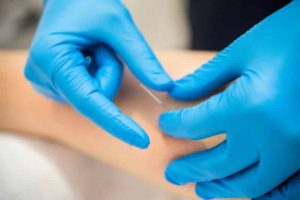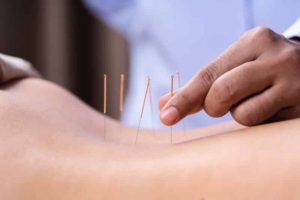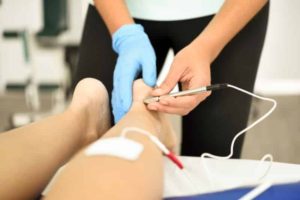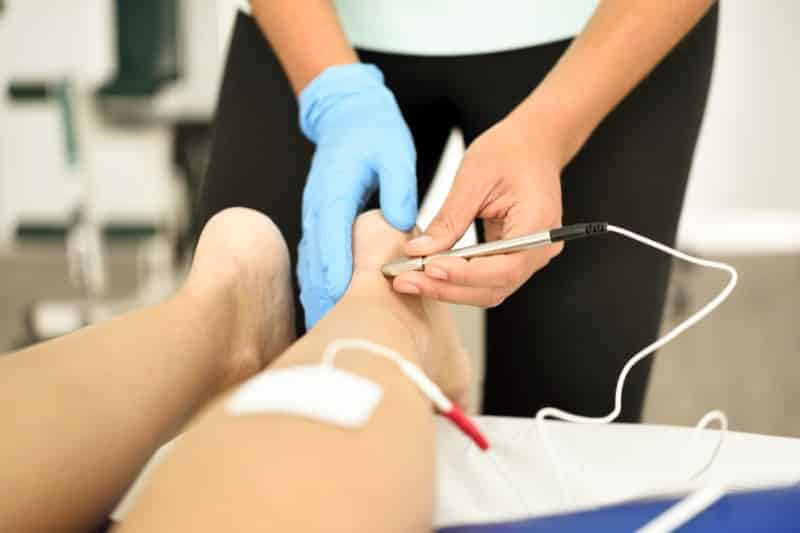What Is The Difference Between Dry Needling And Acupuncture
When it comes to dry needling and acupuncture, many people aren’t sure what the procedures are and if there is even a difference between the two. Are they simply two different terms for the same treatment? If they are different, are there any similarities? Evexia Family Chiropractic is here to provide a clear and concise guide to both treatments by answering the following questions:
- What Is Dry Needling?
- What Is Acupuncture?
- What Are The Similarities?
- What Are The Differences Between Dry Needling And Acupuncture?
- Are There Any Side Effects?
- The Bottom Line On Dry Needling And Acupuncture
Dry Needling vs Acupuncture
What Is Dry Needling?
First, let’s look at why the treatment is called “dry” needling. The name comes from the type of needle used during the course of treatment. A filiform needle is used by the physician to penetrate the skin. This is a solid needle that does not inject anything into the body. Its purpose is to penetrate a muscular area of the body. Hence, the name dry needling is appropriate.
Dry needling focuses on helping patients who have musculoskeletal conditions which cause pain in the body. In many cases, the pain that the patient feels as a result of overworked muscles. Another related cause of where muscles have been damaged in the past and during healing have formed adhesions or scar tissue, both of which can result in pain.
Dry needling works on the process of causing damage to the affected area to trigger an increased healing response. On the surface, causing damage to an area that is already painful may not sound like a wise idea, however, once we understand how the body heals itself, we can see that it is in fact, an effective treatment. Allow us to explain a little further.
When an area is damaged, so to speak, by a dry needle hitting a trigger point, the muscle releases tension, and the body recognizes that ‘damage’ has occurred. This results in the area becoming inflamed and an array of red and white blood cells rushing in to help. As this process takes place, the body begins to heal the affected area at a faster rate. Once the healing is well underway the patient will feel the result as a decrease in pain.
What Is Acupuncture?
Most people are aware that acupuncture has its roots in Asian practices. The treatment focuses on meridians within the body and energy balance.
Once a needle has been inserted and penetrated the specific meridian that the physician identifies as being related to the condition, it will remain in place for around 20 minutes during which time the patient will lie still and relax.
In Asian practices for this form of medicine, there is much focus on Chi. Chi is believed to provide healing energy to the body. When this is blocked or interrupted it is thought to result in various illnesses. Hence, the physician uses acupuncture to bring about normal balance again within the body.
What Are The Similarities
Both acupuncture and dry needling use the same type of needle, usually called a filiform needle. Hence both treatments involve a physician penetrating the skin with a needle that will not inject anything into the body. Along with the use of the same type of needle, the side effects can be similar as well. However, that’s where the similarities end.
What Are The Differences Between Dry Needling And Acupuncture?
Whilst both treatments look very similar to the naked eye, there are a lot of differences when it comes to how the condition is approached and the purpose of the needles in treating the illness or pain. To make things clear and simple to understand, let’s break each treatment down to see what the typical benefits are.
Dry Needling Benefits
- Focuses on relieving tension and pain in the muscles
- Improves flexibility in the body
- Gives a better range of motion
- Provides long-term pain relief
Acupuncture Benefits
- Relief for nausea and vomiting
- Headache treatment
- Lessens menstrual pain
- Can treat allergies
Are There Any Side Effects?
Side effects can come with pretty much any treatment and dry needling and acupuncture are no exceptions to this rule. When it comes to dry needling, the most common side effects are related to the area where the needle was inserted. Some patients may suffer from bleeding or bruising or they may experience soreness around the area.
When it comes to acupuncture, the potential side effects are again very similar. Patients may have some pain at the site of the needle insertion, as well as bruising or bleeding.
Of course, since needles are penetrating the skin, more complicated side effects could arise with any treatment if nonsterile needles are used. Just make sure that your physician is certified, experienced, and skilled.
The Bottom Line On Dry Needling And Acupuncture
Deciding to go for any type of treatment that you may not have had before can be a difficult decision to make. Especially when you are trying to decide between two forms that both appear to have many benefits.
When it comes to choosing either dry needling or acupuncture, consider the condition that you need to treat. Some health conditions, such as those noted above, have a good track record of being treated very well by using acupuncture. For instance, many women suffering from menstrual cramps on a regular basis have found much relief in the hands of a skilled acupuncturist. Acupuncture is a well-established alternative treatment option and for people who would rather opt for such, acupuncture may be the way to go. Of course, it is crucial that they first research the options in their locality and only visit a certified and experienced physician.
On the other hand, if the condition is largely related to muscular pain, looking for a skilled dry needling therapist could be the better option. While dry needling is a rather new treatment with limited research, the research we have so far indicates dry needling to have great potential at treating pain with few side effects. However, as we noted above, much of the success of the treatment is going to be down to choosing the right physician. Contact Evexia Family Chiropractic for more information on the above treatments and to receive the highest quality of chiropractic care in the area!

